 Your new post is loading...
 Your new post is loading...
It's been a white-hot week so far for digital marketing statistics. We've seen numbers roll in about Reddit viewers, digital-media growth, bad ads, web bots, Amazon Echo, ecommerce and the hit film La La Land.
Check out these dozen data points that grabbed our attention:
1. Big Game versus going big on Snapchat
On Thursday, we looked at how many types of digital ads equaled the cost of a 30-second Super Bowl TV spot, which comes in at $5.6 million this year. For Snapchat sponsored lenses, 17 of them add up to one Big Game commercial. A branded lens on the mobile app, according to digital agency Essence, costs roughly $329,400.
2. Redditors love mobile reading
Reddit didn't have a mobile app one year ago today, but on Wednesday it revealed that more than 40 percent of its content views occur via its app....
This past year, we've seen the importance of visual content emphasized by the changes that occurred across almost every major social network, including Facebook, Twitter, Instagram, and Pinterest. At the same time, both video and infographics have become powerful tools for brands looking to communicate more easily with their readers.
To help you keep pace with these trends, let's take a look at some statistics that demonstrate the impact visual content has on reach, engagement, and sales....
Unfortunately, many landing pages overload visitors with information and options. All of the choices end up confusing visitors, which results in fewer customers.
How Not to Confuse Your Landing Page Visitors: 1. Help Visitors Take the First Step The first rule about not confusing people with too many options is…give them fewer options. Though challenging to some, it is crucial to minimize the number of actions you ask visitors to take on your landing page. The purpose of a landing page is to allow people to start the process and get their foot in the door. It’s where the visitor begins the journey with you, so the fewer choices a visitor has to make on your landing page, the better....
The power of blogs in influencing consumer purchase decisions is stronger than you might realize. According to data from a research study conducted by Research Now, nearly nine in 10 consumers (84%) make purchases after reading about a product or service on a blog. Among consumers between the ages of 18-34, blogs ranked as the most important source of information to make buying decisions. Among consumers between the ages of 35-54, blogs ranked as the second most important source behind friends, family, and colleagues. Even older consumers (55 and older) value blogs when making purchase decisions ranking them third in terms of importance behind friends, family, and colleagues and editorial articles.
For brands, this data is critical. The research found that blogs influence household purchase decisions for 54% of the survey respondents, gifts that consumers are buying for themselves (45%), and gifts they’re buying for other people (30%). In fact, 25% of respondents indicated that they buy something each month based on blog content!
Consumers are turning to blogs for specific reasons as they travel through the path to making a purchase. Nearly one in two (46%) use blogs for initial product investigation, and 43% use blogs for inspiration. One in three consumers (33%) use blogs to narrow down their purchase options while 30% use blogs to confirm their purchase choices. In other words, blogs play a role at every stop along the marketing and sales funnel....
Social media marketing is the driving force in most bloggers’ strategy. You’re probably posting to social media every day, using your blog links as bait to lure the reader to your site in some form or fashion. But, for some reason it may not be working…
There are a lot of things happening behind the scenes in your social media marketing. Relationships need to be built on social media, and a lot of people really don’t dive that deep into this sort of stuff, because you can find lots of articles about how to do the same old things over and over again....
A three-year study from Scratch, an in-house unit of Viacom, found that a third of millennials believed they won't need a bank in the future. These millennials, defined as those between ages 18 to 33, also ranked the top four banks in the "ten least loved brands" and would rather go to the dentist than to their bank.Is this surprising?
This segment of the population has grown up in an era that saw trust in banking erode due to the financial crisis and a near stagnant economy. This is also a period when new technology has enabled firms like Simple, Moven, Square and PayPal to be more relevant with a generation that would rather handle finances on their phone than in a branch.
Here are some of the findings from the Millennial Disruption Index:
Americans own an average of four digital devices (including high-definition TVs) and spend 60 hours a week consuming media across them collectively.
“The number of digital devices and platforms available to today’s consumers has exploded in recent years. As a result, today’s consumer is more connected than ever, with more access to and deeper engagement with content and brands,” stated a Nielsen blog post today on its Digital Consumer report....
96% of consumers acknowledge having received mistargeted promotional information and 94% have taken steps to break off communication...
... The study conducted by Blue Research, an independent research consultancy, which surveyed a nationally representative sample of nearly 600 social media consumers in October 2013, confirms that marketers are wasting money providing content to consumers-ads, offers, promotions, etc., that has nothing to do with their interests. People are fed up and taking action. One of the ironies of marketing is that marketers are taught to “go where consumers are” but consumers don’t want marketers interrupting their online time....
...Conducted by OnePoll on behalf of I Love Velvet, the study found that 51 percent of Americans believe the cash register’s days are numbered, even saying that it would be “gone soon.”
“Instead,” the company says of its findings, “consumers favored solutions like MPOS which allow for a customer to check-out anywhere on the store floor. Thirty-five percent of respondents stated that they would shop at the store more often.”In addition, 17 percent of those surveyed would share their experience on social media, while 37 percent would tell a friend and recommend the retailer....
You can choose to be part of the online conversation and contribute to steering it. Or, you can let conversation go on without you, letting others control what is said about your business brand....
So you start your business, you get a website, and sign up for Facebook and maybe one or two other social networks. Your online marketing plans are set, right? No! One thing you forgot is social listening tools…There are now many options – Both free and paid.This is meant as a social listening tools review. Those that will benefit the most are just beginning to calculate winning customers online by connecting the puzzle pieces of their efforts...
As social media continues to mature, established industry players from large platforms to emerging vendors are quickly moving to standardize the value their business.In April, Facebook introduced Cost-Per-Action, or CPA, a new metric that allows managers at brands and agencies to assign a dollar value to specific actions.Instead of paying by impressions (CPM) or clicks (CPC) -- metrics that cast a wide net and can be easily gamed -- actions help managers understand the true cost of acquiring fans or engagements. A
nd with marketing budgets allocating more resources to social media campaigns, demonstrating value for money has become a priority when generating earned media through a mix of owned and paid promotion. Early this year SocialChorus, an advocate marketing company, published an Ebook that compiled all of the available research on the monetary value of social endorsements. While conceding that no standard formula can be considered definitive, The Earned Media Value Index (EMV Index) is a starting point toward navigating the new cost metrics that are driving managers day-to day and month-to-month campaign decisions....
Today's consumers are using many channels to consume information. Are retailers thinking about an omnichannel strategy? If not, they should!
It’s well established that today’s consumers use multiple channels – mobile, Web, social media, in-store – when engaging with retailers. On any given day, a shopper might research a clothing item online, visit the brand’s Facebook page and then purchase it in a store where she can try it on; the next, she might see something in a store on her lunch hour, price-check it on her smartphone and purchase it online at home, after checking in with the retailer’s social media pages.
According to the Interactive Advertising Bureau, three-quarters of shoppers use their smartphones while in-store to make a purchase decision, and according to Vantiv VNTV 0%, Inc., half have research and purchased an item online and then picked it up in the store. But how aware are consumers of all this channel-switching? Do they think, “Wow, I’ve really used a lot of channels today!” Or even, “Hmmmmm – which channels should I use to engage with my favorite retailer?”
I’m thinking probably not. They’re just doing what consumers do, flitting from channel to channel like a butterfly, as fickle as can be, calling to mind the flighty “followers of fashion” described in The Kinks’ 1966 single. What is an Omnichannel Strategy? With consumers freely using whichever channel suits them at the moment, retailers must attract, engage with and gain the loyalty of these followers of fashion, and they can do this by creating a consistent experience among all channels — the so-called omnichannel experience.
An omnichannel strategy begins with generating awareness on digital channels, because while brand awareness in the past was all about signage and window dressing on High Street, it’s perhaps more important today to stand out on digital channels. Indeed, in emerging markets, mobile devices are the first channel through which consumers may experience your brand....
“Brandwashed: Tricks Companies Use to Manipulate Our Minds and Persuade Us to Buy” is an attempt to write a modern version of “The Hidden Persuaders”. Martin Lindstrom cannot write as elegantly as Packard, as his chapter titles (eg, “Buy it, get laid”) make clear. But as a marketing veteran who lists McDonald's, Procter & Gamble and Microsoft among his former clients, he knows the industry well. It is far more sophisticated than it was in the 1950s, and just as cynical.
Marketers have vastly more information about potential consumers than ever before. Every time you use a loyalty card you surrender personal information. Every time you do a Google search or hit the “like” button on Facebook, you surrender yet more. Google and Facebook protect personal privacy, but they also make money by selling generic information to advertisers. Professional data-miners use electronic data to create a detailed picture of what you have bought in the past (“history sniffing”) and how you bought it (“behaviour sniffing”). They can then draw your attention to products they think you might want to buy in the future. Smartphones can tell you that there is a shop nearby that stocks just the thing you have been looking for.
Marketers milk science for insights. Studies show that music can affect people's behaviour: shoppers in American department stores who are exposed to piped tunes with a slow tempo spend 18% longer in the store and make 17% more purchases than those who shop in silence. Marketers routinely track shoppers as they make their way around supermarkets and listen in on their conversations at the counter. They also take willing subjects and observe their reactions as they gawp at products....
|
Since James Surowiecki published his book “The Wisdom of Crowds,” the common wisdom is that we are commonly wise. In other words, if we average the knowledge of many people, we’ll be smarter than any of us would be individually. And that is true -- to an extent. But new research suggests that there are group decision dynamics at play where bigger (crowds) may not always be better.
A study by Iain Couzin and Albert Kao at Princeton suggests that in real-world situations, where information is more complex and spotty, the benefits of crowd wisdom peak in groups of 5 to 20 participants, and then decrease after that. The difference comes in how the group processes the information available to them.
In Surowiecki’s book, he uses the famous example of Sir Francis Galton’s 1907 observation of a contest where villagers were asked to guess the weight of an ox. While no individual correctly guessed the weight, the average of all the guesses came in just one pound short of the correct number....
If it’s research-backed or numbers-driven, sign me up. These actionable tips are what drive a lot of our experiments at Buffer as we’re keen to see if the best advice from these studies meshes with our experience, too.
And there’s a lot of new info to go off of.I’ve collected 10 of the latest surprising, revealing studies on social media here in this post, with takeaways and insight into social media timing, Instagram sharing, Facebook users, and more....
For society, smartphones are becoming appendages. They may even be as important as breathing air! Ok, not really, but with Cyber Monday now a date on the holiday calendar, it is evident that our smartphones will influence how society shops.
A higher percentage of women than men shop online. Additionally, 30% of women use mobile devices to shop.
Throw in social media into this mobile online shopping melting pot and what do we get?
Let’s find out!
...Let’s start with the first excerpt shall we for this speaks directly to the ominous title of this article. Yes, while some will laud the 35% of marketers who are investing in a seamless or integrated shopping experience, I for one would rather focus on the 65% who are not and in turn not giving the consumer what they want.
The statistics come courtesy of a survey conducted by The E-tailing Group Inc. Perhaps even more troubling is the fact the 35% of the respondents who say they expect to offer a seamless shopping experience plan to do so in 2014 or 2015. Doesn’t that in turn mean the 65% who DON’T plan on offering this to consumers will go at least until 2016 before even beginning to plan for it?...
A central problem for marketers is how to convince consumers of their products’ value. How long will customers listen to all the benefits of starting their day with Cheerios before they dismiss everything as manipulative bunk?
According to the 2 professors, Suzanne Shu of UCLA and Kurt Carlson of Georgetown, the answer is the rule of 3: Making up to 3 claims about a product’s value is effective advertising -- any more than that, and people’s cynical defenses kick in....
Experian Marketing Services released its 2014 Digital Marketer Report, with the theme of “becoming a cross-channel marketing mastermind.” The report, available for download here, is an extensive analysis of the landscape as it currently sits for digital marketers in 2014.
This is the sixth iteration of the report, which runs over 100 pages and is chock-full of digital imperatives. For travel brand marketers working towards planning their next fiscal year budgets in the coming months, this report also reveals some key areas of shifting focus. Here are some of the benchmarks and trends being tracked in the report – this is only a taste, as the report is truly extensive in benchmarking scope....
Marketing metrics tend to overlap with key business analytics. Here's a handy overview on how to distinguish their differences and leverage both to make better informed business decisions..
Ever wonder how Amazon predicts exactly what you want to buy? The answer lies in business analysis – understanding patterns of what happened in the past to predict what might happen in the future.
With the explosion of lead and customer data available at marketers fingertips, it is no surprise that marketing analytics has become the rising star of business analytics. In fact, spending on marketing analytics is expected to increase 60% by 2015.
This post explores the goals of business analytics, how marketing analytics is playing an ever crucial role in business analysis, and how organizations can make better business decisions using real market feedback....
Loyalty is an increasingly fleeting thing. In fact, the average Gen Y mother now defines “brand loyalty” as a window of allegiance lasting 6-12 months before she moves on to explore alternatives. And suffice to say, there are plenty of alternatives out there for her to explore, regardless of category. So, given the increasingly elusive nature of loyalty and the abundance of brand and product choices available, one might be inclined to argue that there’s never been a more important time for you to implement a loyalty program.
But it’s simply not true and here’s why…
Any loyalty program you create probably won’t work. But don’t feel too badly because as it turns out, most loyalty programs don’t work – at least not the way the companies who own them would like to believe. In fact, a recent study from Edgell Knowledge Network found that the level of actual brand loyalty among consumers who are part of a loyalty program versus those who are not, is not materially different.
So, why don’t most loyalty schemes work? Research points to several reasons....Loyalty programs are transactional. Loyalty isn’t....
Want more information about your customers, prospects and competition? Use Facebook for market research and get insights that make your marketing better.
Perhaps one of the most underutilized benefits of Facebook is market research.
Because of its size (1.1 billion and counting), Facebook can give you insights about your customers, prospects and even your competitors.Here are eight ways to use Facebook for market research...
Measurement in the public relations industry has been a problem. Could publishers and PR work together to solve it?...
In part, digital has solved the problem having opened up new (and more measurable) avenues for messaging and content but media relations – the core PR function – still remains highly intangible.The paid media industry meanwhile has access to untold amounts of data covering audience profiles, interaction and engagement.Why can’t these insights be extended to editorial media?...
The desire to be part of something bigger. To really understand what it is about branding that appeals to people, we first have to understand the deeply entrenched set rules that we as people, animals, or however you would like to refer to yourself, actually work to, whilst observing the guidelines, parameters and systems that we work within…sure Brands act as a sign post for the product or service, building associations etc but that’s not all and not enough either.
To avoid going into the deep physiological motivations that affect all of us, for the purposes of this article I am forced to make some sweeping generalisations. The first of these is that beyond all other emotional requirements, we have an unending drive to be understood. Understanding is the lifeblood of our emotional state. For those of you that wish to do a little back reading about this somewhat broad statement, I can suggest several well written studies, that do a far better job of explaining why this is than I can deliver in this short thought piece.
To illustrate: have you ever noticed that most people actually quite like talking about their thoughts, feelings, opinions and emotions to other people. We see the evidence of this in the massive popularity of status updates and tweets etc…
By identifying the differences between “innovators” and “laggards” and everything in between, Geoffrey Moore creates a roadmap for how new markets develop. While his book focuses on high tech, the lessons that he draws and the example he gives are applicable to every industry and business situation....
|



 Your new post is loading...
Your new post is loading...



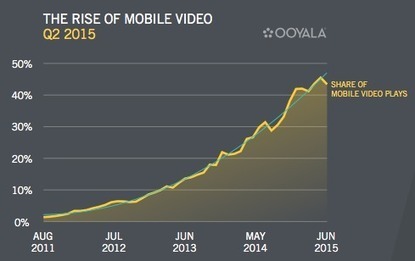


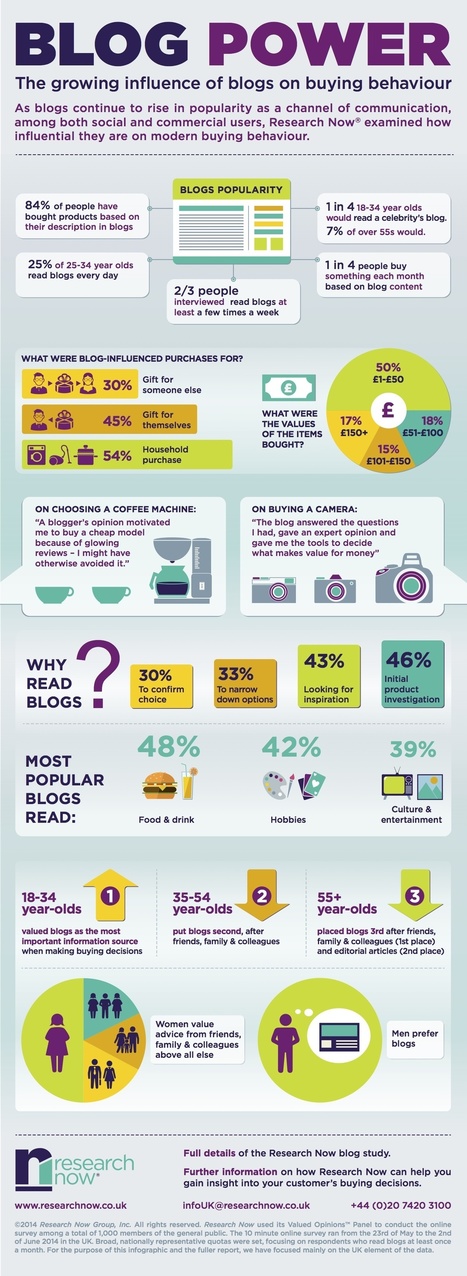




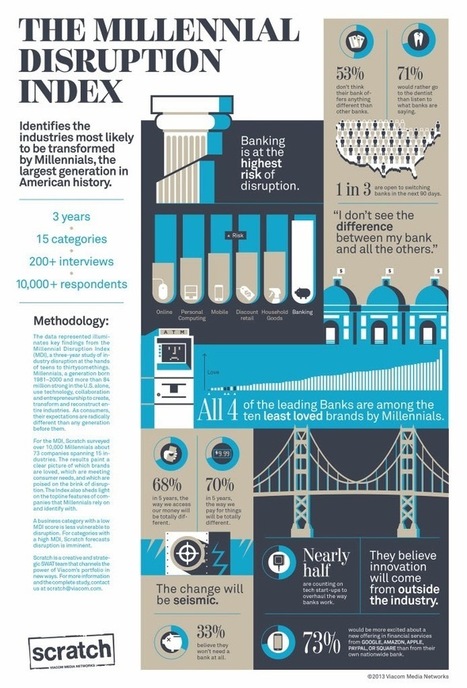







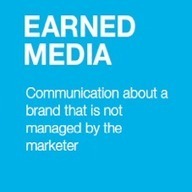




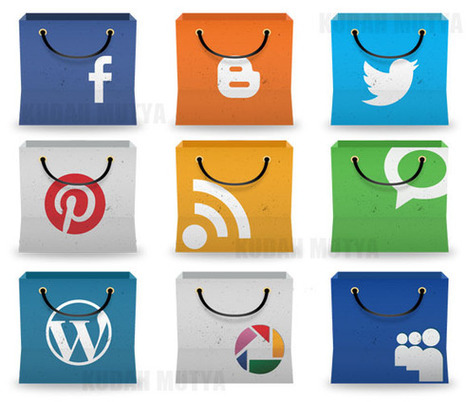


















Social marketing research you can use.